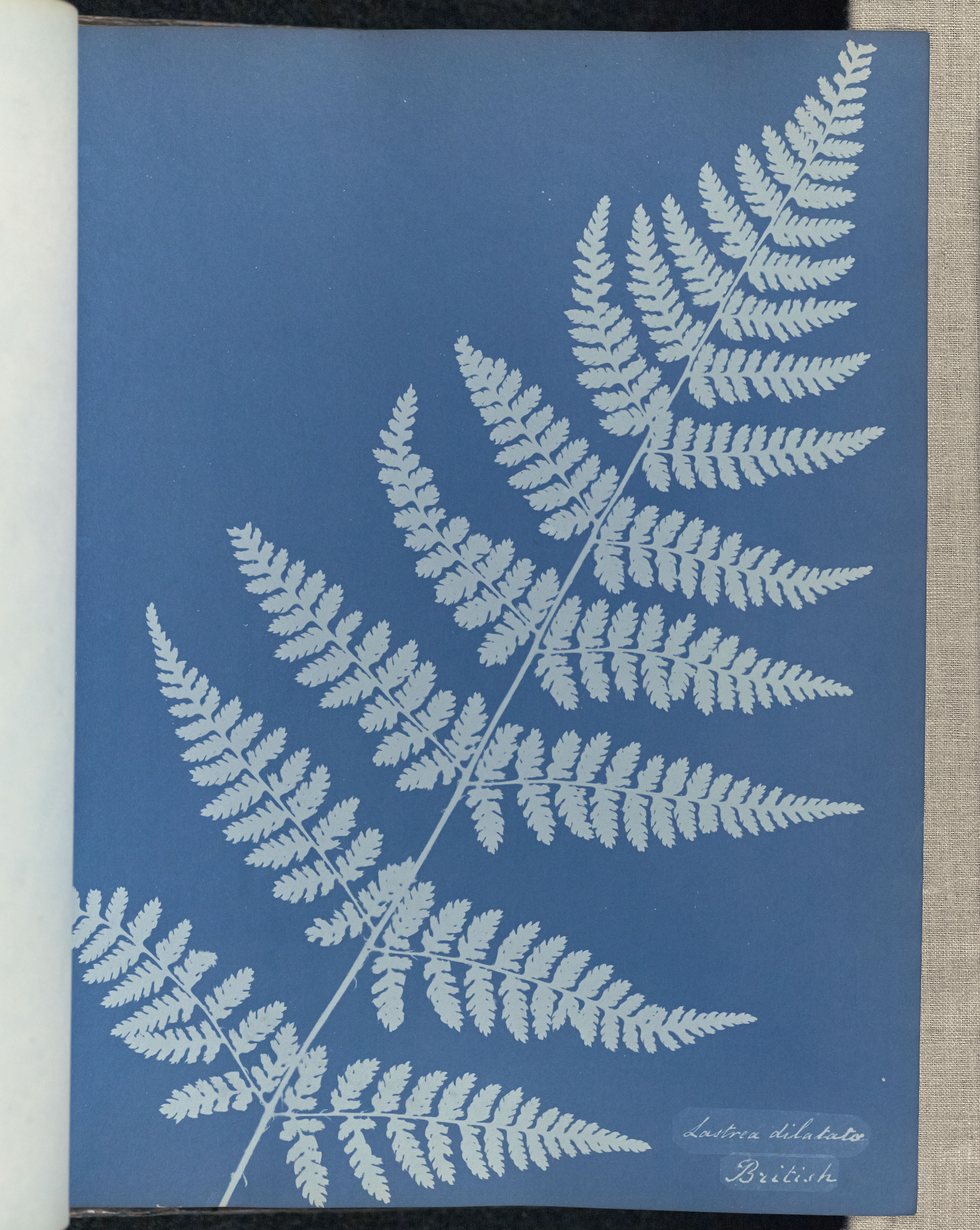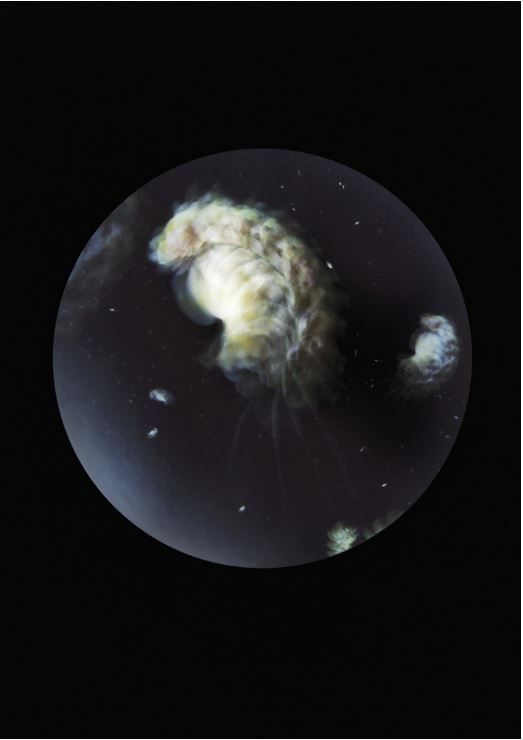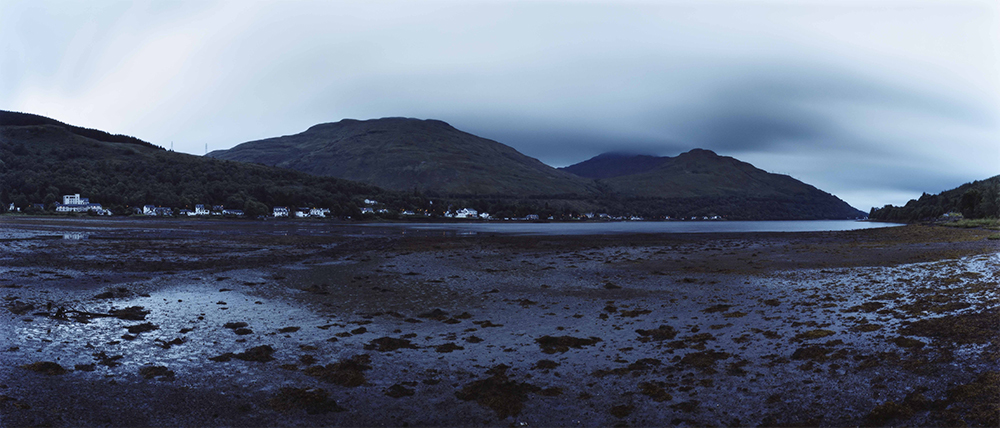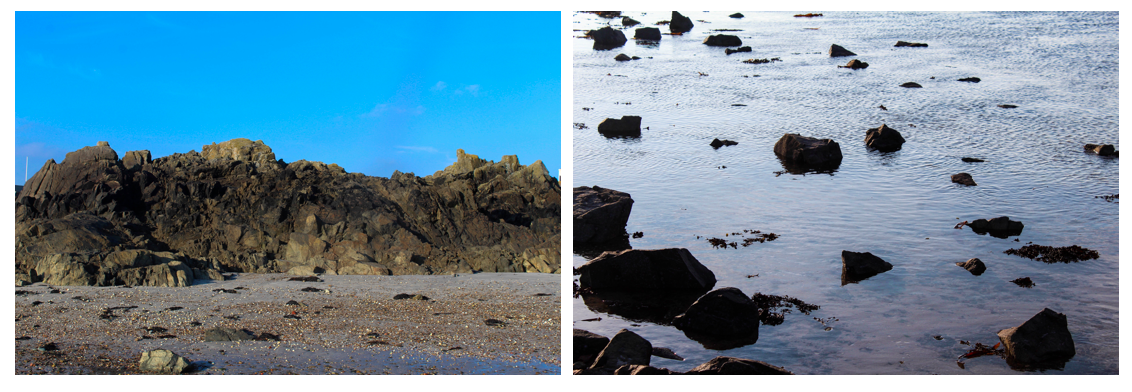Photography essay for political landscape
Question: ‘To what extent have the movements Romanticism and Surrealism, effected the view of the Sublime, shown through artists; Tim Walker and Julia Margaret Cameron’
quote : “The sublime is something which has power to compel and then destroy us. Pleasure is only pleasure if it is felt and the same is to be said about pain. ” E:burke .
The area I have chosen to study is the historical movements which have inspired many surrealism concentrated artists such as; Tim Walker. I have chosen to do so, as I believe his work can be viewed within the premise of Romanticism, and often shares similarities between the aesthetic theory of the sublime. This combination of power is often seen as metonymic. During the 1800’s, many creative pioneers (such as) philosophers, writers and artists, began to propagate a new vision of the world, which was coined ‘romantic’. It was an exploration which covered the idea of nature being a divine spirit. This universal immersion of creative minds yearned for the harmony of man and nature. These ideas soon developed into traditions of antiquity, soon many artists no longer wanted to produce work which was characterised as ‘named artistic style’, turning their back on traditional renaissance work. In contemporary usage this subsequent art movement now carried with it many connotations seen as ‘romantic love’. Romance is formed from the combination of sentiment and sentimentality, However, It allows the thinking eye to add more value to what it sees, so subjectively, many onlookers would agree. The sublime is said to be ‘an instance of instances’. (Barthes 1980) This was said by Roland Barthes, when he was stating why and how photography has the ability to enable emotions. It causes an independent reaction to each person’s’ emotions and what they believe to have seen as romantic. These experiences are those which transcend rational thought, words or language. It is an experience which is a meeting of subjective-internal (emotion) and the objective- external (nature). The creation of Romanticism, as well as being an emotional response to an ideological concept, It was also to show beauty within an -altered landscape, so at the time too being a reaction against religion. Not only this but their work was an emotional response as revolutionaries and other forward thinkers. In the 18th century, the break from religion, was when science became the hegemonic ideology, the inventions then started to undermine god, and create a scientific basis of the world. So the romanticism was apart of such a revolutionary time. This war of independence colonised romanticism as the new form to see the world, and endeavour a new history for western cultures.
The hypothesis I propose to answer is ‘To what extent have the movements Romanticism and Surrealism, effected the view of the Sublime, shown through artists; Tim walker and Julia Margaret Cameron.To start off my investigation I intend to look into a painting which is based from the ideas of the romanticism movement, and which I personally consider to be sublime. The piece I have chosen is called ‘A Sea Storm’ by Claude-Joseph Vernet. The piece was formed off the impulses of the eighteenth century, this new philosophical artistic view of the world incorporated a new intellectual view in to their art pieces. They incorporated the validity of aesthetics, including the ineluctable values of the sublime alongside beauty based on individual taste and sensibility. The new physiological impacts concentrated more on the sensational aspects of nature and less on the subjectivity to each individual person. To my mind this painting denotes excitement, power and strength. The vast quick strokes of genius form an oxymoron of spontaneity creating a intoxication of fascination of man versus nature within this painting. The incorporation of narrative charters a new exotic archaic means of experimentation. Finally the colours of the purples and dark tonal colours mimics that of the fallen, this is a pavement for ‘pleasurable terrors’ of human passions. I believe the impact of Edmunds Burke’s ‘A Philosophical Enquiry into the Origins of our Ideas of the Sublime and Beautiful’ creates a formal description of figurative passions. Burke states that
‘I say the strongest emotion, because I am satisfied the ideas of pain are much more powerful than those which enter on the part of pleasure. Without all doubt, the torments which we may be made to suffer are much greater in their effect on the body and mind, than any pleasures which the most learned voluptuary could suggest, or than the liveliest imagination, and the most sound and exquisitely sensible body, could enjoy.’ (E:Burke 1757, philosophical enquiry into the sublime and beautiful)
Historically the Sublime is a term which refers to a greatness beyond all possibility of calculation, measurement, or limitation. This was first written in the 1st century AD though its origin and authorship what was soon developed became a piece of art, or photography and in essence what has been taken and experienced by someone, can not ever be repeated. So both Romanticism and the Sublime, have the challenge of capturing a feeling which was only experienced by themselves. Developing from romanticism this combination of nature, fantasy and undertones of imagination, leads us to the intellectual artistic transition of Tim Walker.

Tim Walker, has many associations with international magazines, his work shows a wealthy exposure of history, lasting knowledge and understanding of British culture. Many of the areas in his work are accomplished through a romantic ‘spirit of place’ said to be rural and paradisal. His exciting talent made him friends with many, describing him as ‘A strange fox-like person’ He is fearless to capture human physiognomy, his sensibility overshadowed by his glorious colour of flamboyance. The raw freedom of eccentricity creates himself a ‘artistic bohemia’. Walker’s tableaux worldly images inspired a transgression of ‘out of place’ beauty combined with incoherent objectification of mythology. Forming interesting compositions that could be addressed too as ‘sublime’. He encapsulated an understanding of social and political issues in a childlike expression of beauty, rather than disagreement or anger. His angle of postmodernism fashion photography is stemmed from the authorship of expression paved before him through the creation of romanticism and the ideas of the Sublime.
A Tim Walker piece that had a great influence over me was the piece as seen below. I chose this image due to the influence of meanings. The piece inquires a generosity of skeptical. The elements of surrealism echoed through the mystical atmosphere are reflected within the lent pose and bright colours that the model herself radiates. It does not objectify but give herself an understanding of infinity, as she has an obvious place within the narrative. The aesthetic of darker colour gives the icon a dominant strength and agency of female empowerment, something typically not expected to be seen through the perspective of a male photographer. The connotations within this image has to the sublime, is the effects of pleasure and pain. Although there was no direct reenactment of this word, it still obtains influence of words derived from his, such as desire. Desire and eroticism is prevalent much of surreal works, this provokes the image so the reader sees endorsement of excitement. This soon can either transpire into love or power, and in this case, it is the power that is entirely bounded between normal living. The height and bottomless depths forming from both ends of this piece, transpired into the physical representation of ecstasy. This image in relation to Burke, I believe, poses his fundamental thoughts of displaying both pleasure and pain, and how the woman evokes a woman’s femininity of love, yet her surroundings of the darker tonal range perspire that of hate. The mystery and smokey effect of the light itself, creates a truculent influence of romanticism, creating a delicate sense of atmosphere, mimicking the femininity of the women centred in the image.

This leads me onto the analysis of my own work. I had such a strong influences of surrealism, emotions and the effect of pleasure and pain in my work. I believe this is evident through my images. I have chosen this piece; as it undergoes a repugnant change it is as if the image itself is a distant reality and a dream like desirability of towering virtues of ecstasy. It is essentially a surrealist image, although my intention of this piece the development of the inability to breath underwater, creating a juxtaposition of the beauty that water, essentially is the effect of nature trying to kill you. It creates an irony of how the sublime is alive for pain, and how we take pleasure from being submerged in something that has the ability to end our lives. Due to Walker being a modern photographer, his work not only shows the more traditional view on the forming of photography, but too the modernisation of colour in order to create the subjectivity of surrealism. Surrealism within his work is the most prevalent aspect, Surrealism was founded through the progressively expanding boundaries of art, it engages the whole environment of a piece, curating a pluralistic environment.Its modern aesthetic forms significant ideas into a more psychoanalytical subject of body. These perspectives define the techniques which once formed photography. Walker is a pioneer of surrealism. However his conceived position on professionalism makes his work still fall under more traditional objections such as Pictorialism and his work although not demeaning on women, however it does show demonstration of ‘ The Male gaze’ For as long as it is known, the female body has been used as decoration in much of photography, many models seen naked with a cornucopia of little respect given to them other then what the male bodies desire. The reaction to the continuously provocative use of women to my mind is a predicament of the current cultural time we live in today and if it is still okay to use women as a fundamental trend of pleasure. During the age when art was born it was visual culture to paint them naked, however; This art would only ever be made for capitalist men creating a fallacy. The exorcism soon continued into Pictorialism, usually only prevalent within male works. The visual of female nakedness attributes a sentiment of ‘the male gaze’ to Tim Walker’s work. I don’t believe there is such a thing as ‘female’ or ‘male’ photography. Through only showing the dominant rhetoric of narrowing women to their nakedness, it connects to an unfortunate wider view of gender inequality. We need an artist who despite them being male, they strive on the unprecedented phenomenon of focusing on femininity being heard. I believe Tim Walker is this photographer. It is key there are photographers not only female such as ‘Julia Margaret Cameron’ who too can establish a neutrality and establish an inquiry and impulse to photographing a woman without misconceptions as to why.
After reading Burke’s work A Philosophical Enquiry into the Origins of our Ideas of the Sublime and Beautiful I too wanted to show a strong narrative of the sublime, and for the piece to become inundated feeding many aspects which would not typically be seen within a photography piece. So to achieve this I believed the most creative way to show an interesting landscape would be underwater. Not only does the water liquify emotions, but it creates a softness to an image, while also demonstrating the ownership the water has upon the young girls life.

An older art piece, based off that of Pictorialism, also gave me inspiration to focus more towards female models and friends in order to re-create and make an effective embodiment of surrealism and not sexualisation. Pictorialism was occurring in the 1880s-1920’s this is when new camera technology were developed and Jersey was part of a large revolution and hot-bed for photography and experimentation, for example in the innovations of Thomas Sutton. Soon photography was the height of Impressionism and was developed less from science and derived more into art. These allegory paintings are based on a short story and myths from more biblical tales and then further depicted into literal paintings. These allegorical and spiritual matter of religious scenes applied the principles composition and design, but the subjective spiritual motive. I believe my work should be conceptualised as more of a vertiginous complex, showing imitations of otherness and exploring the right of artistic theory. The influence of the sublime on my work allows my work the comprehensive experimentation as to how you can articulate moments which exceed comprehension. I believe water is a key factor of essentialism yet also a great representation of the power of nature formed from romanticism. It has such beauty which is unconceivable, it is difficult to describe, we need it to live, however within minutes its power has the capability to kill us. This is why much of my surreal work has relations to the sublime through the accord of using water. However an interesting juxtaposition to my work is the delicacy of the female form, not used in such a way to be sexualised, but for the purpose of women’s empowerment and narrative. This leads me onto my next inspiration and also past ‘ism’ that has helped form the creation of my work.
The Artist who I looked at was, Julia Margaret Cameron. Cameron was a photographer in the Victorian era. The bulk of her work from being illustrative allegories based off religious and literary works. In the allegorical work in particular her work had a clear influence from that of Pre-Raphaelite. Her work has delicate limp poses with soft lighting. Her work was unconventional through the intimacy created through the long exposure, her subject moved and thereby leading the lens intentionally out of focus. There is a strong sense of allegory within her work, she creates a symbolism of a short story in order to demonstrate her family. The bulk of her work are depicts forms of being illustrative allegories based off religious and literary works. In the allegorical work in particular her work had a clear influence from that of Pre-Raphaelite. Her work has delicate limp poses with soft lighting. Her work was unconventional through the intimacy created through he long exposure, her subject moved and by leading the lens intentionally out of focus. This lead me further into looking at how unique it was to be a female influential photographer at the time. Her work is very different to anything that a man would produce. Women are looked at as pure and seen to have. loving relationship with family and sister in a clearly taboo and posed setting, almost table like. The has a strong juxtaposition to that of the male sense of photography at the time. The man’s eye and the photographic gaze, women historically are being looked at different though the representation is often eroticised and objectified.these naked figures seen as art for only the pleasure of men. However a female would show herself being empowered as a mother and ally clothed showing the sexism within the period and soon this leads onto larger postmodernism topics such as feminism and the fight for women’s rights and demand for less sexualisation of their bodies. This demonstrates the influence of females within my own work, and the slight male gaze onto the work of Walker. She expresses females emotions to be of importance, more than that of their bodies. The young women’s strong stature and colour possess power and starts off the discussion of the capability of women historically, and how they themselves should be considered as a ‘sublime’ being.

The approach of female nakedness creates an interdisciplinary approach reflected the themes of Pictorialism and the social influence of the male photographer at the time, However due to Tim Walker being a fashion photographer for the most part. I believe this piece from Cameron perfectly captures what the majority of her images are about, this being a glowing persona of childhood innocence and a relationship within the subject and the person taking the photos herself. The almost religious and heavenly light that she moulds her into the feminine aspect we would expect from a teenage girl. The evocation of spatial immensity is formulated to create a more fully immersive effect of space and light. This image, I believe starts discussions of a rich endeavour and the possibilities a young girl is able to have. It has been said by Edmund Burke, that ‘one source of sublime is infinity’ (E:Burke 1757) and through the directions of light shining upon her and the wisdom shown through the light, that she, is infinite.

My own imagery which is indicative of the influence of Pictorialism and you are also able to see a clear indication of the much more surreal elements within this work. It is once again composed in such a way you would not expect to see a women in a bath, it is a much more contemporary feel to the angle and the composition, it captures so many effects of how water and light can be used to form elements of indifference. Once more it shows water to be sublime within its more abstract beauty. The etymology of the sublime is derived from its boundless limits, formed of what emotions are given. The water here is a literal connection with something most angelic and magical. The small circles are heavenly with their softness and brightness of colour. The complimenting light purples and blues seemingly create an inventive of new life and beauty. The passion and vibrancy reflects that of a childish wonderment, creating a new passion of the sublime without pain.
To conclude, the creation of the Sublime itself is a rendered disinterest in aesthetic judgments and is the sentiment of what ethics the body believes they have been subjected to. Your emotions must be suspended for it to become abundantly clear, the orchestration of subjectivity of pleasure and pain is a private introspection which is acquired through a separate consciousness. Zhang Han said that, ‘the body is the only direct way through which I come to know society and society comes to know me. The body is the proof of identity, the body is language.’ As previously spoken about Romanticism and Pictorialism, where not simplify to derive an emotion which cannot be received by everyone the same, it is a political and social revolution of the way art should make you feel and what art is said to be. Surrealism is the modern experimentation of how emotions can be viewed and seen in many forms. This can be seen through the fashion work of Tim walker or more Pictorialist work of Cameron. Walker shows his unique seeing eye not only to allow interpretation of the male gaze, but also his non sexualisation of women highlights his own influence of female Pictorialism, which can too can be seen through my work. To my mind the answer to my hypothesis ‘To what extent have the movements Romanticism and Surrealism, effected the view of the Sublime, shown through artists; Tim walker and Julia Margaret Cameron. Is that; The sublime is made for the purpose to evoke feelings of transcendence and has taken importance from Abstract Expressionism. The sublimity of a piece is swept over and people do not realise the extent that Romanticism and Surrealism that have formed the basis of what we feel in a piece. Overall it is what we make of a piece with our own unique feeling that is what we see. The innovation of Surrealism and Romanticism creates prosperity for more groundbreaking photography.


 Mandy Barker, Beyond Drifting: Pleurobrachia stileucae, 2017
Mandy Barker, Beyond Drifting: Pleurobrachia stileucae, 2017 Mandy Barker, SOUP: Turtle, 2012
Mandy Barker, SOUP: Turtle, 2012 My Response
My Response
 My Response
My Response









